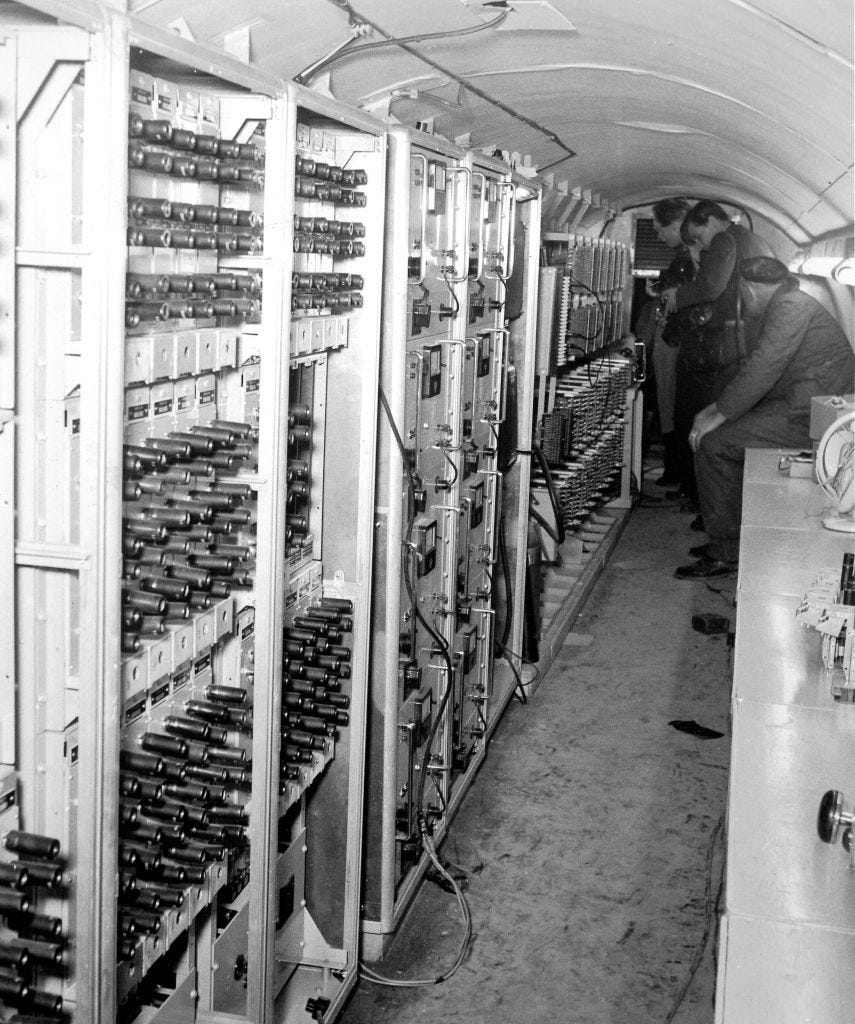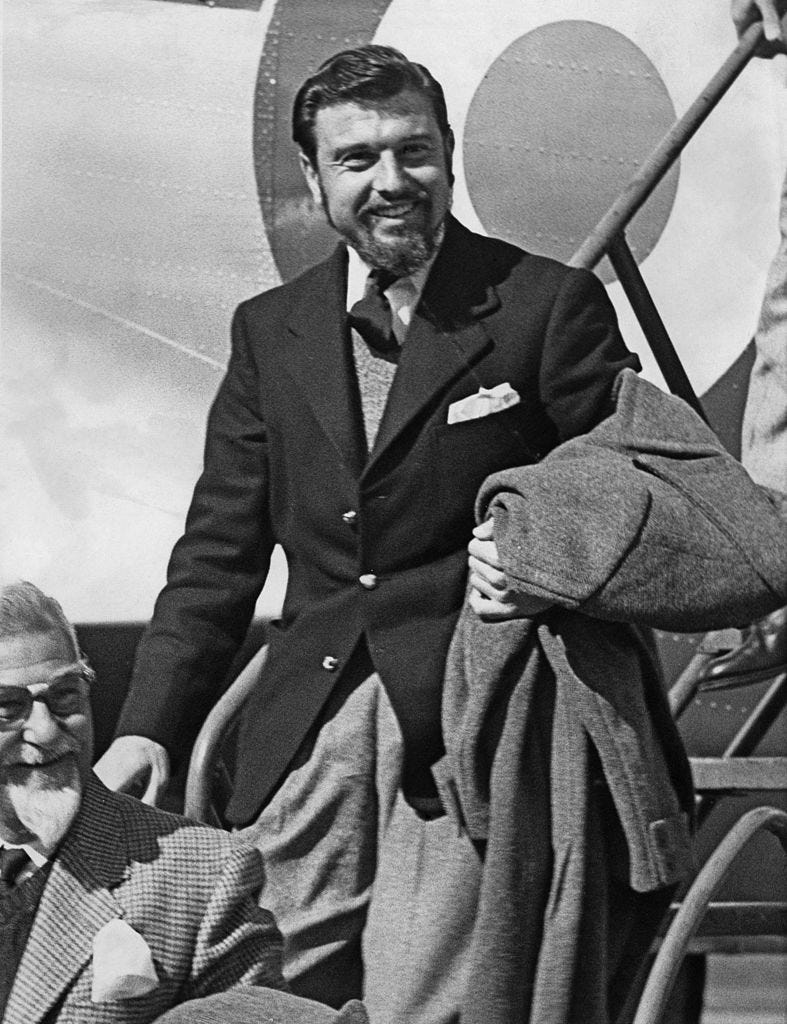The Berlin tunnel
How $6.5 million and a 1,476-foot tunnel netted the CIA and MI6 intelligence from East Berlin for 11 months and 11 days in 1955
[My apologies for the complete absence of fresh posts these past few months. I was caught up with publishing the third part of Let Bhutto Eat Grass, a series of spy novels set during the Cold War in India, Pakistan, and Europe. —Shaunak]

The reality of the Cold War had sunk in by 1948. The CIA had lost key sources in the Soviet Union and its satellites, leading to significant gaps in intelligence coverage. Eager to overcome this handicap, the CIA considered multiple approaches, one of which involved tapping selected telephone lines in East Germany.
Planning
By mid-1951, exploratory discussions were taking place in Washington, and a plan was beginning to take shape. The East Berlin offices of the East German Post & Telecommunications network were penetrated, and an agent network was put in place.
For the next year or so, various methods of tapping telephones were explored. Beginning with short samples, the methods were refined iteratively to achieve a 29-minute sample, the longest up until that point The methods had been validated, but they needed to overcome another challenge before it could be deployed permanently.
This is where the British SIS came in. They had tapped into the telephone lines of the Soviet Army headquarters in Vienna by digging a 70-foot tunnel from a men’s clothing store, an SIS front. A tunnel would solve the problem of ensuring that the wiretap wasn’t discovered.
After a careful survey of potential sites, the CIA-SIS team zeroed in on one in the American sector of Berlin. The water table was at 32 feet below the surface in that region, significantly lower than other parts of Berlin, and would thus allow them to construct a tunnel without expensive waterproofing measures. In addition, there was also space to set up a facility at the American end of the tunnel.
Negotiations between the CIA and SIS took place in late 1953 & early 1954, with both sides agreeing to the following:
The US would be responsible for the facility on the American side, and for digging the tunnel to a point beneath the target cables in the Soviet sector of East Berlin.
They would record all the signals produced by the wiretap, and would process all telegraphic materials received.
The British would drive a vertical shaft from the end of the tunnel to the cables, physically place wiretaps on the cables, and provide a jointly-manned centre in London for processing voice recordings.
Construction
Work began, and by 17 August 1954, the facility in the American sector — a warehouse with an unusually deep basement — was ready. Later that month, engineers of the US Army sank a vertical shaft in the warehouse basement and began tunnelling towards the Soviet sector.
After more than its fair share of engineering challenges — which included striking the water table far sooner than expected — the tunnel was completed on 28 February 1955. It was 1,476 feet long, had an anti-personnel door near the eastern end, and demolition charges in case the Soviets discovered it and broke through.
On 28 March, the vertical shaft to the cables was completed, and by 2 August all 3 cables had been tapped. One of the cables — FK 150 — was in poor physical condition, a fact observed by the British team that placed the tap. The insulation was brittle and cracking in multiple places. But there was nothing to be done about it.
Telephone conversations tapped in Berlin were transcribed by a team in London, while telegraph signals intercepted were decoded in Washington. But there were limitations. For one thing, the US and UK were unable to break the encryption used by the Soviets for sensitive conversations. So they relied on gleaming intelligence from unguarded conversations among officials.

Over the next 11 months and 11 days, and the team in London transcribed 67,000 hours of conversations.
Discovery
Following a long period of heavy rainfall, water entered the telephone and telegraph cable network in the area of the tunnel, causing malfunctions. The Soviet military leadership in East Berlin lost communications as telephone and telegraph connections developed faults on 16 April 1956.
Operators in West Berlin watched with growing concern as East German and Soviet signals personnel went about testing and replacing cables. On the evening of 20 April, they messaged headquarters that all precautions had been taken, “including primary one of crossing fingers”.
A little after midnight on 22 April, 40-50 men were seen digging at 3 to 5 foot intervals along the length of the cable. The top of the tap chamber was discovered at 2am, and a microphone placed in the tap chamber transmitted Russian speech at 2.10am.
All the while, personnel at the other end of the tunnel continued listening to telephone conversations between Soviet officers discussing the communications situation. They didn’t appear to have realised what they had discovered.
East German and Russian personnel on site continued digging, enlarging the hole in the tap chamber. But a telephone conversation intercepted at 4.15am between Lt Col Vyunik and Maj Alpatov suggested that Soviet signals officers had been informed of the discovery.
After that, conversations over the tapped telephone lines became vague. The Soviet military rerouted some of their communications over KGB circuits which ran on overhead lines and could thus not be tapped in the same manner. The tap wires were cut at 3.35pm. The microphone in the tap chamber went dead at 3.50pm.

Aftermath
CIA and MI6 had both expected that in the event of discovery, the Soviets would suppress knowledge of the tunnel’s existence rather than admit that they had been penetrated. But with the commandant of the Soviet garrison away, the acting commandant, Colonel Ivan Kotsyuba, invited the entire Berlin press corps for a briefing on site.

For years, CIA and MI6 continued to believe that the discovery of the tunnel had been a fortuitous accident.
Unfortunately for them, the entire operation had, in fact, been betrayed from the very beginning.
Betrayal
An MI6 officer who had served under diplomatic cover as Vice-Consul in Seoul, Korea, Blake was among the British diplomats taken prisoner when Seoul was captured. Taken to Pyongyang and the Yalu River, Blake became a communist after witnessing the bombing of North Korean villages by American aircraft and reading Marx.
It was the relentless bombing of small Korean villages by enormous American Flying Fortresses. Women and children and old people, because the young men were in the army. We might have been victims ourselves. It made me feel ashamed of belonging to these overpowering, technically superior countries fighting against what seemed to me defenceless people. I felt I was on the wrong side ... that it would be better for humanity if the Communist system prevailed, that it would put an end to war.
During his imprisonment there, he volunteered to work for the Soviet spy agency, the MGB (which would become the KGB a year later).
Blake was released and returned to Britain in 1953.

Soon afterwards, he found himself involved in planning the tunnel and, in the latter part of 1953, informed the MGB about its purpose as well as planned location. A year later, he was posted to Berlin and charged with recruiting Soviet agents. Which suited him just fine, because it allowed him to provide detailed information about the tunnel to his handlers.
Product
CIA and MI6 gained considerable political and military intelligence from casual conversations during the 11 months and 11 days when the wiretap was operational. They did not, however, gain any intelligence related to the KGB, whose communications used separate circuits on overhead lines. Nor were they able to crack Soviet encryption at the time.
Contrary to the CIA, who naturally felt that the product was worth its weight in gold, the NSA did not believe that the intelligence gained through the wiretap was of much value.
If you enjoyed reading this post, you might also enjoy reading my spy novels: The Let Bhutto Eat Grass series of spy novels deals with nuclear weapons espionage in 1970s India, Pakistan, and Europe.






Interesting story! Also just placed an order for your book. Look forward to reading more :)
Any particular reason as to why the NSA didn't believe that the intel CIA + MI6 gathered was of value?